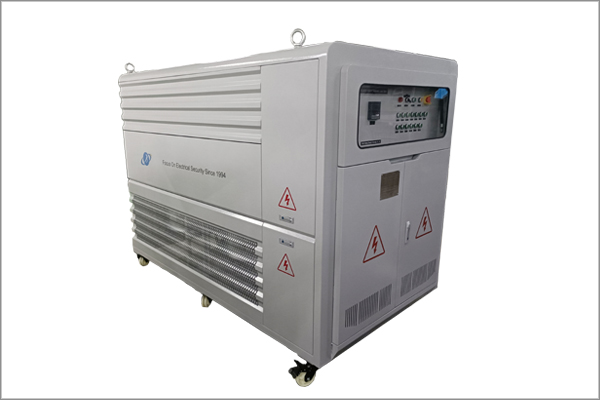Requirements for the use and maintenance of generator resistive-inductive load banks
Time:2024-10-16
The operational environment requirements for generator load banks, particularly those with resistive-inductive characteristics, encompass several aspects. Below is a detailed summary of these requirements:
I. Basic Environmental Requirements
Ambient Temperature:
The ambient temperature is a crucial factor when operating generator sets. Extremely high or low temperatures can affect the performance and lifespan of the generator.
It is essential to ensure that the generator operates within an appropriate temperature range to avoid performance degradation or failures due to overheating or cold exposure.
1000kW Dummy Load Bank
Altitude:
As altitude increases, air density decreases, reducing the supply of oxygen required for combustion during generator operation, and the output power of the generator set should be adjusted accordingly.
When using generator sets at high altitudes, the impact of altitude on generator performance should be considered and adjustments made accordingly.
Relative Air Humidity:
Excessively high relative humidity may also affect generator performance, particularly in environments where high humidity can lead to corrosion or short-circuit risks for the generator.
Therefore, it is important to ensure that the generator operates in an environment with moderate relative humidity to reduce potential risks.
II. Load Bank Characteristics Requirements
Resistive-Inductive Load Bank Characteristics:
A resistive-inductive load bank converts electrical energy into magnetic energy using resistive-inductive components and then converts the magnetic energy back into electrical energy through impedance changes.
Resistive-inductive load banks are suitable for high-frequency circuits and DC circuits, such as high-frequency amplifier circuits, resonant circuits, and voltage stabilizer circuits.
Load Type Matching:
Generator sets should be able to match different types of resistive-inductive load banks, including resistive loads (such as light bulbs, electric furnaces, etc.), inductive loads (such as air conditioners, machine tools, etc.), and nonlinear loads (such as UPS, electronic computers, etc.).
When selecting a generator set, it is necessary to ensure that it meets the power requirements of the load and consider the load's fluctuation and stability.
III. Operation and Maintenance Requirements
Power Correction:
When generator sets operate under non-standard conditions (such as high altitude, high humidity environments), power correction should be performed on the diesel engine to ensure that the generator's output power matches the load demand.
Capacity Calculation:
When selecting a generator set, it is necessary to perform a capacity calculation based on the existing load and consider the possibility of future load expansion.
It is recommended to appropriately increase the capacity of the generator set based on actual usage to ensure stable operation during load fluctuations.
Combined Use:
In complex, high-load operating environments, it is recommended to use multiple combined generation systems to distribute the load and improve system reliability.
Loads can be divided into sensitive loads (such as electronic computer systems and other electronic devices) and insensitive loads (such as resistive loads and electric motors) to prevent motor startup from causing waveform distortion in the generator voltage and affecting sensitive loads.
Regular Maintenance:
Generator sets require regular maintenance and servicing to ensure long-term stable operation.
A maintenance plan should be developed based on the operating environment and power, including cleaning, inspections, and replacement of wearable parts.
News Recommendation
-
 2024-09-11
2024-09-11TRIUMPH LOAD EXHIBITING AT Enlit Europe 2024 -BOOTH 7.H08
-
 2023-04-21
2023-04-21TRIUMPH LOAD EXHIBITING AT DATA CENTER WORLD GERMANY 2023-BOOTH F909
-
 2023-04-06
2023-04-06TRIUMPH LOAD EXHIBITING AT ELECTRIC POWER TECH KOREA 2023 – Booth G109
-
 2022-05-05
2022-05-05What is the role of ac load bank for power supply?
-
 2022-05-05
2022-05-05What is the role of the load bank?


